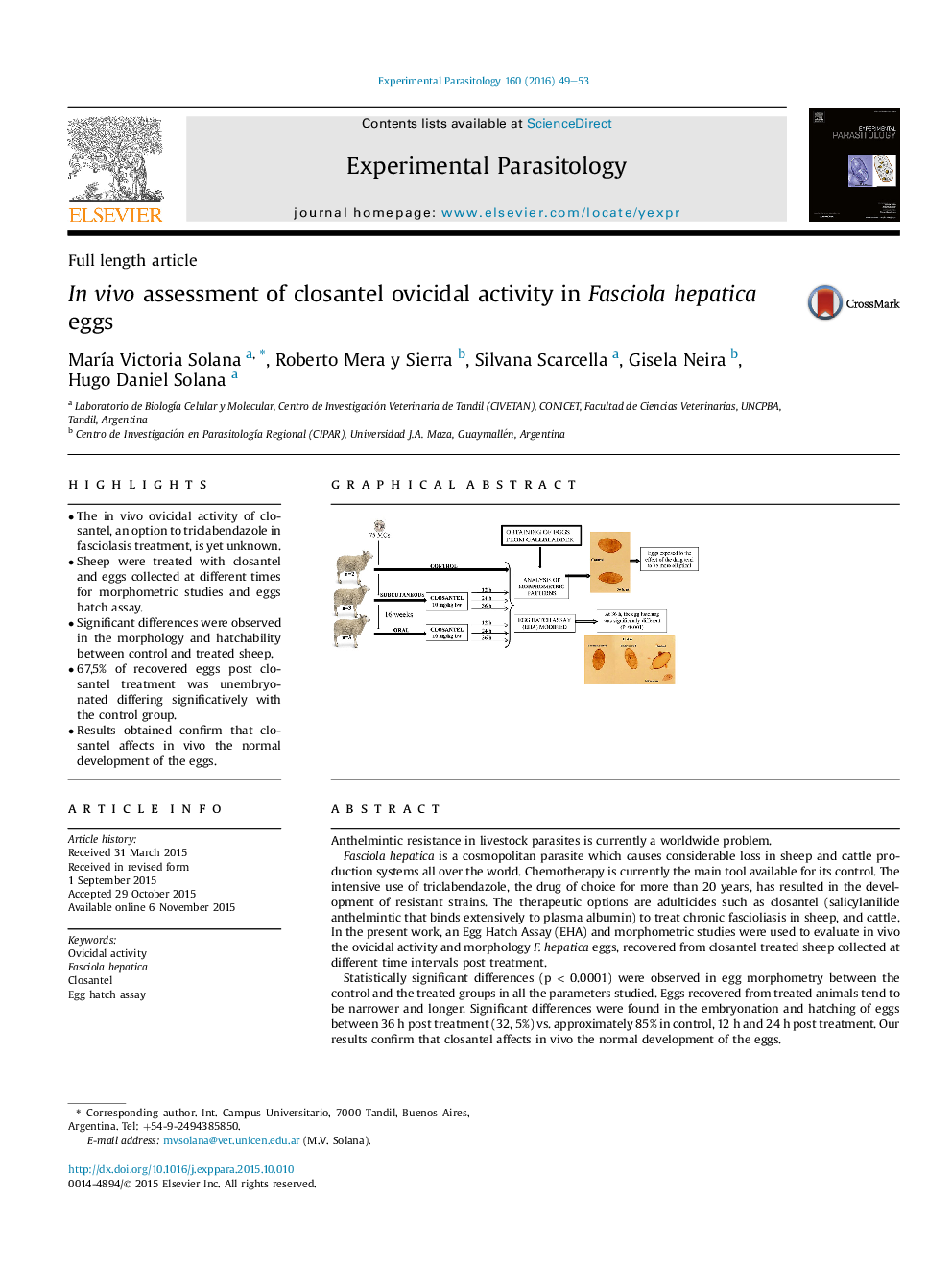| Article ID | Journal | Published Year | Pages | File Type |
|---|---|---|---|---|
| 4370993 | Experimental Parasitology | 2016 | 5 Pages |
•The in vivo ovicidal activity of closantel, an option to triclabendazole in fasciolasis treatment, is yet unknown.•Sheep were treated with closantel and eggs collected at different times for morphometric studies and eggs hatch assay.•Significant differences were observed in the morphology and hatchability between control and treated sheep.•67,5% of recovered eggs post closantel treatment was unembryonated differing significatively with the control group.•Results obtained confirm that closantel affects in vivo the normal development of the eggs.
Anthelmintic resistance in livestock parasites is currently a worldwide problem.Fasciola hepatica is a cosmopolitan parasite which causes considerable loss in sheep and cattle production systems all over the world. Chemotherapy is currently the main tool available for its control. The intensive use of triclabendazole, the drug of choice for more than 20 years, has resulted in the development of resistant strains. The therapeutic options are adulticides such as closantel (salicylanilide anthelmintic that binds extensively to plasma albumin) to treat chronic fascioliasis in sheep, and cattle. In the present work, an Egg Hatch Assay (EHA) and morphometric studies were used to evaluate in vivo the ovicidal activity and morphology F. hepatica eggs, recovered from closantel treated sheep collected at different time intervals post treatment.Statistically significant differences (p < 0.0001) were observed in egg morphometry between the control and the treated groups in all the parameters studied. Eggs recovered from treated animals tend to be narrower and longer. Significant differences were found in the embryonation and hatching of eggs between 36 h post treatment (32, 5%) vs. approximately 85% in control, 12 h and 24 h post treatment. Our results confirm that closantel affects in vivo the normal development of the eggs.As one of the first effects, this drug affects the performance of the trematode's reproductive physiology. Even though closantel treated animals may still eliminate eggs in the first days post treatment, these are not viable.
Graphical abstractFigure optionsDownload full-size imageDownload as PowerPoint slide
